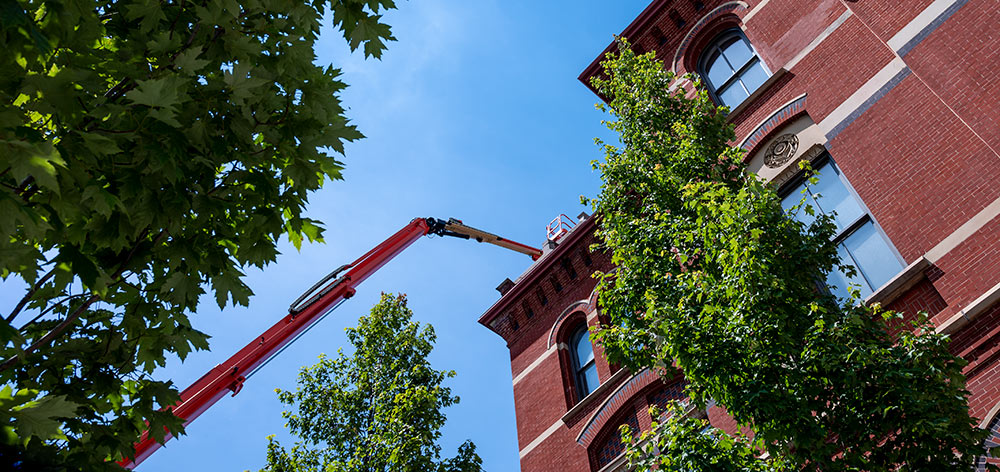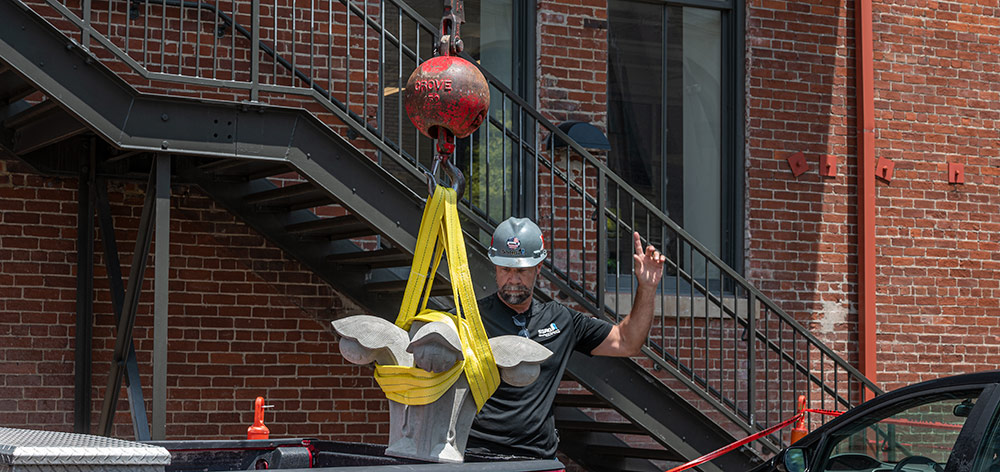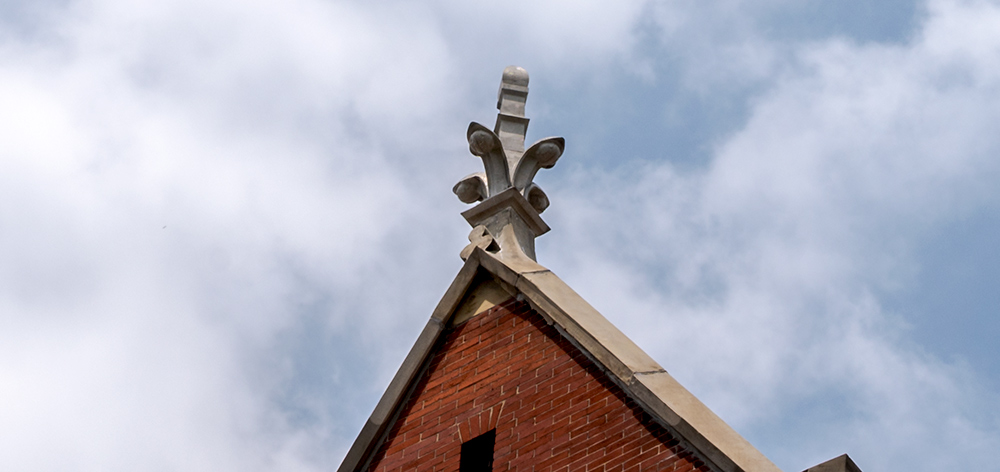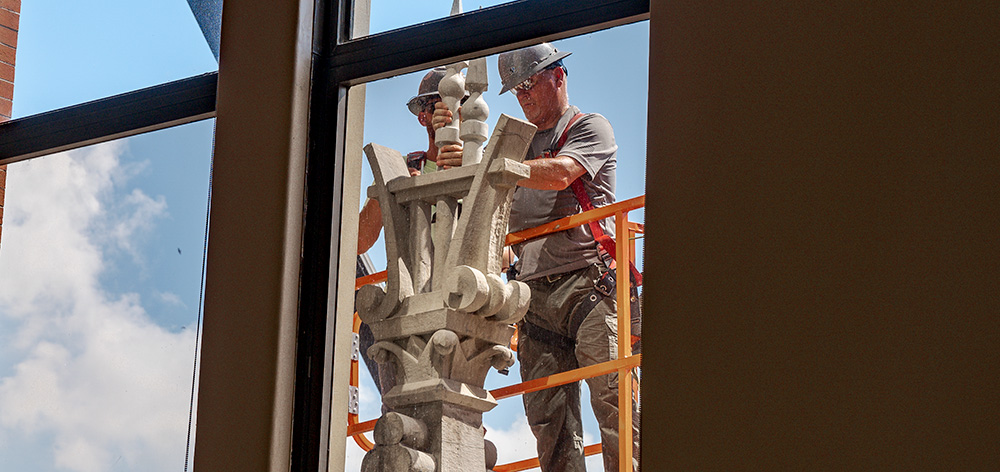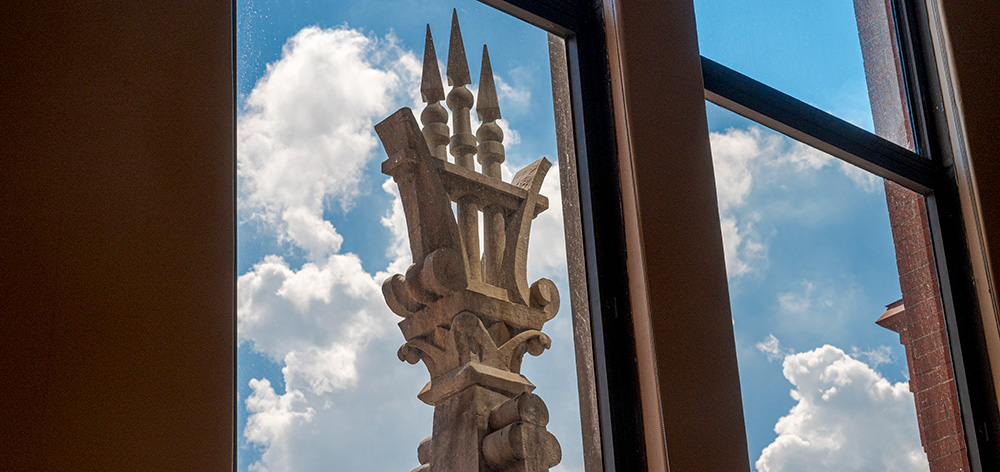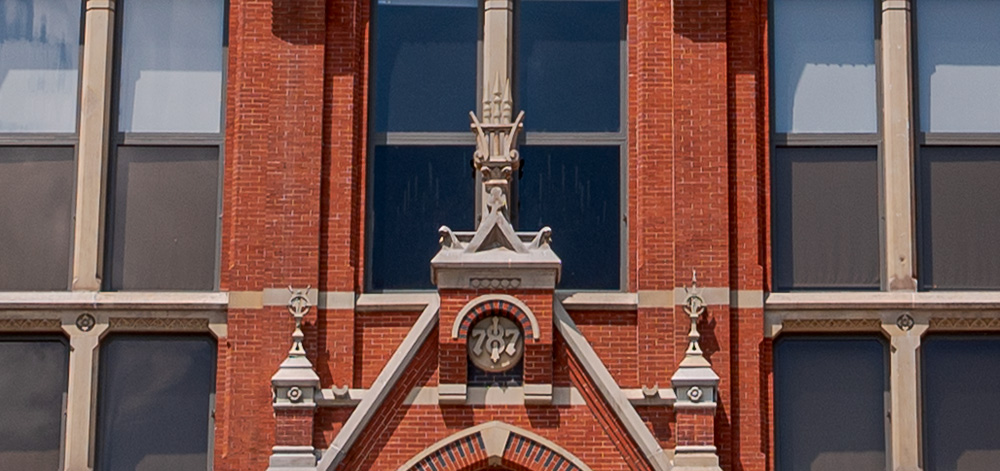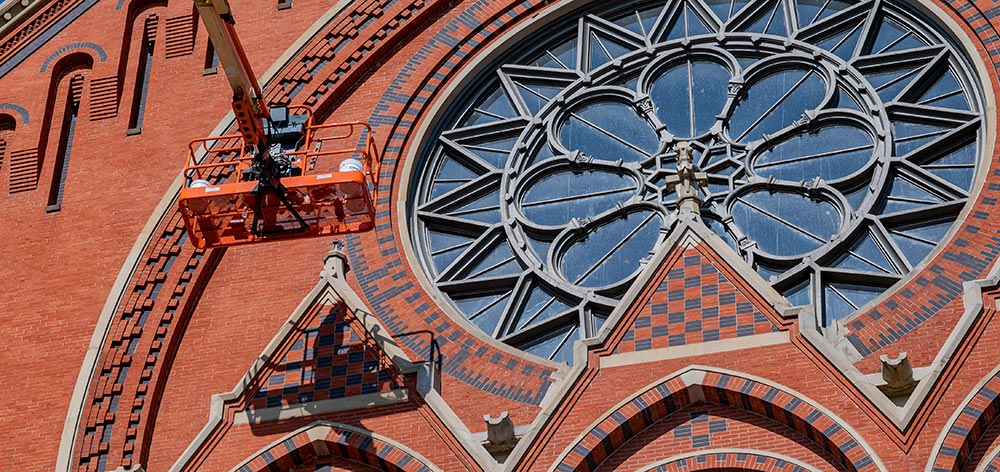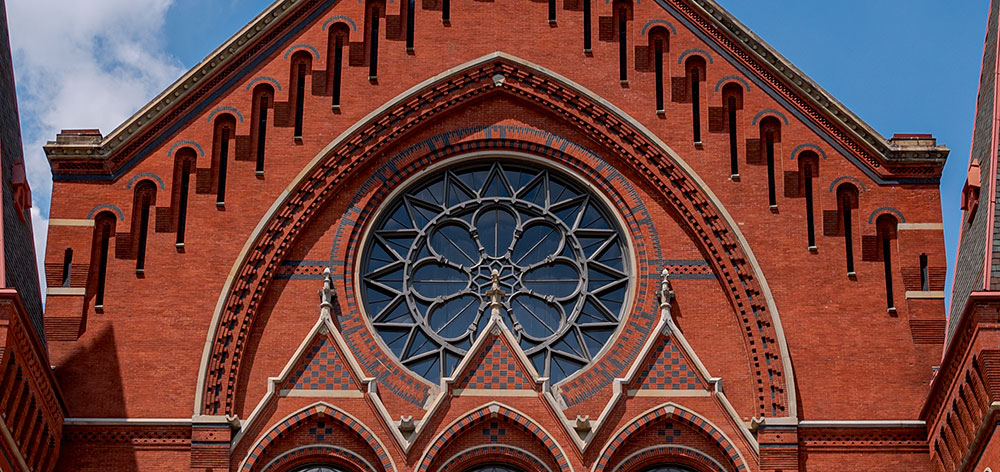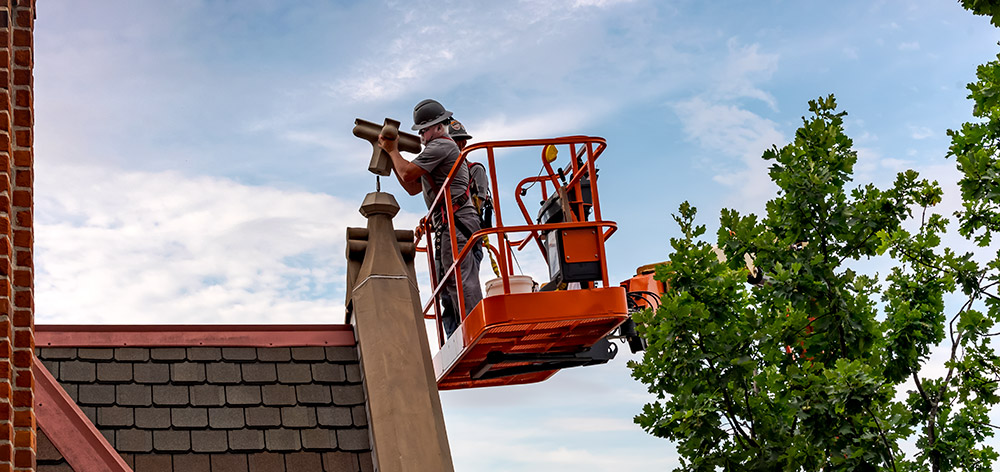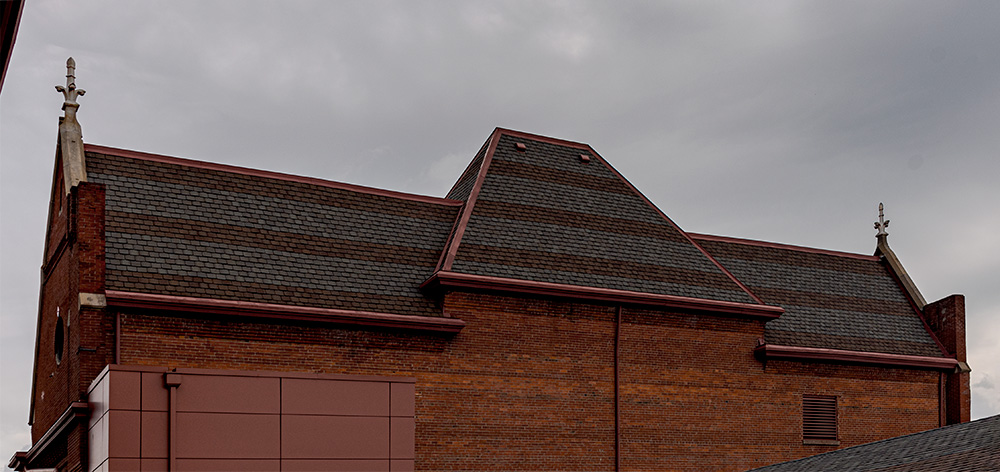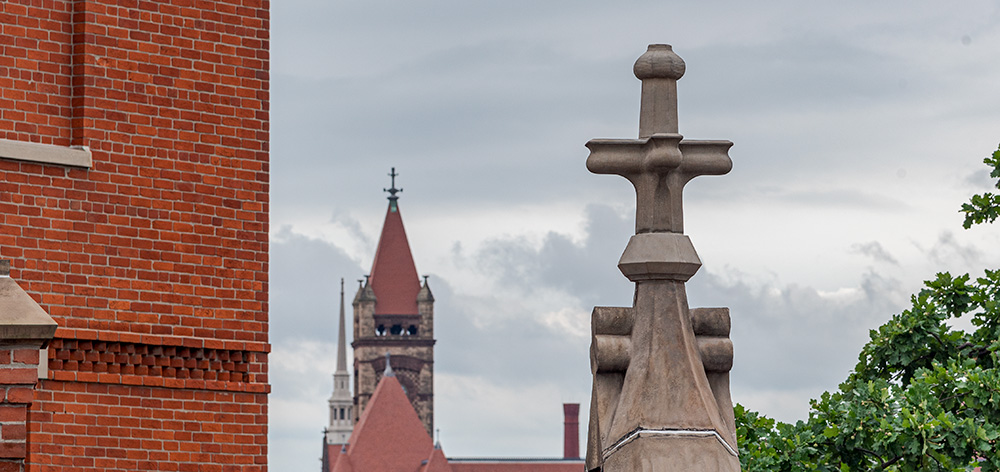By Diana Tisue and Rick Pender
Updated 30 June 2021 by Thea Tjepkema
The Friends of Music Hall provided the funding to restore the sandstone ornamentation on the exterior of Music Hall, including ten finials atop gables, and a sandstone lyre (ancient harp).
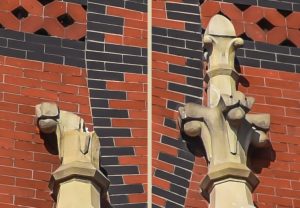
Near the Rose Window
Over the past 140 plus years, the original carved sandstone has deteriorated to the point that only portions of these important decorative elements remain –– others have been completely lost. This restoration is part of the continuing effort by the Friends of Music Hall to renew the architectural integrity of the exterior of this great Cincinnati landmark.
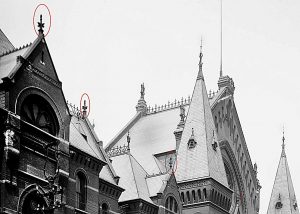
Restoration to the Original Design
When Samuel Hannaford designed Cincinnati Music Hall in the High Victorian Gothic style, he included a Gothic fleuron*, or finial*, on each of eleven gables, save the main apex reserved for an “Angel of Music.” Friends of Music Hall board member and historic preservationist Thea Tjepkema carefully researched and documented these missing details using numerous historic photographs. Tjepkema’s work is detailed in a feature story in the June issue of Cincinnati Magazine. Read “Thea Tjepkema is Music Hall’s Guardian Angel” online.
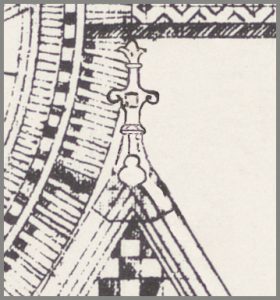
Purchase a fine art print of Hannaford’s original drawing
EverGreene Architectural Arts (Brooklyn, NY) was hired in 2017 to meticulously draw the missing ornaments as well the missing metal roof adornments. The proposal to restore these essential historic sandstone ornaments on this National Historic Landmark was spearheaded by Tjepkema and approved by the State Historic Preservation Office and the National Park Service in September 2020. The Friends of Music Hall committed to fund this project. Work began in November 2020 and was completed at the end of June 2021.
Music Hall’s recent 2016-17 major rehabilitation included the restoration of many historic attributes, thanks to funding from the Friends of Music Hall. The organization continues to fulfill its mission to preserve and restore historic elements fundamental to Music Hall’s beautiful original character.
The Finials and How the Work Will Be Carried Out
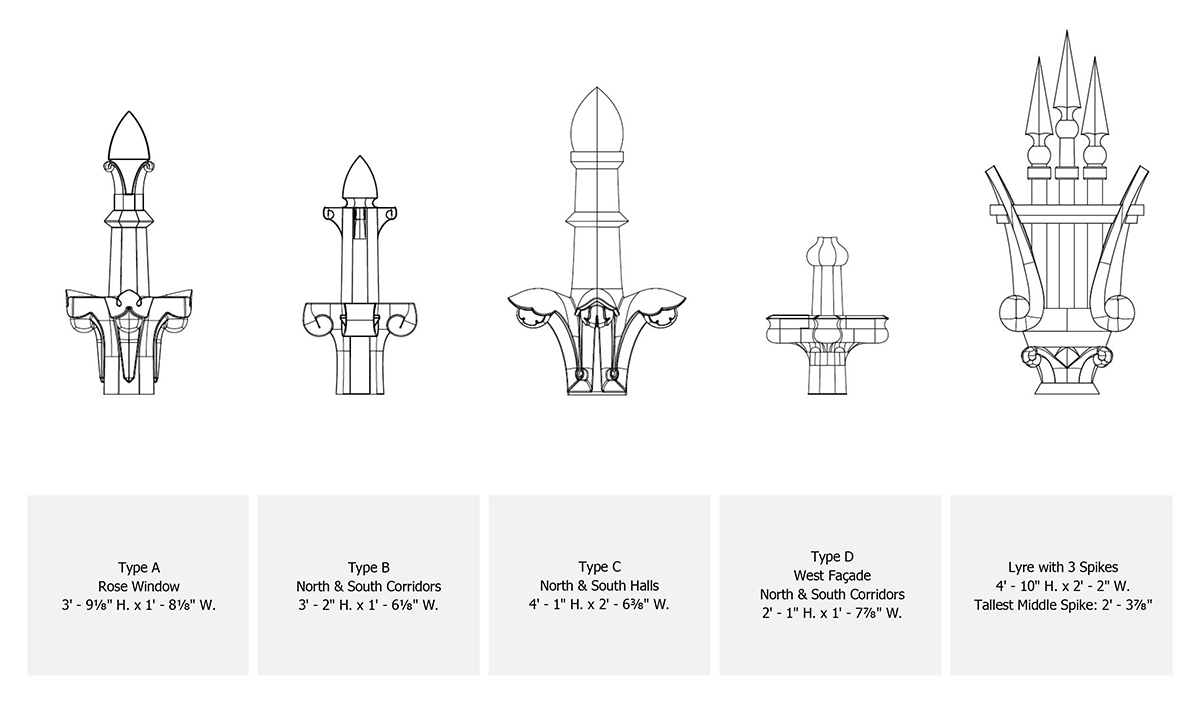
The nine finials on the building’s front (the one in front of the Rose Window is made of metal and painted a sandstone color), and two on the back, include four distinctive designs, and have returned the dramatic High Victorian Gothic look to the building’s roofline. At the center of the main hall on the front façade, an existing sandstone lyre was also repaired – its three spikes were restored.
It Takes a (Highly Skilled) Village
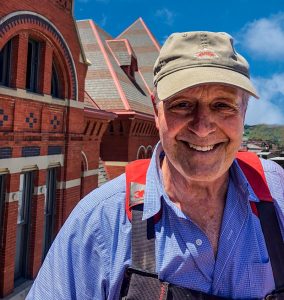
Architect, Music Hall Finial Restoration
Ken Jones, prominent Cincinnati architect, oversaw the team restoring the finials, ensuring they met the National Park Service guidelines. SSRG-Structural Systems Repair Group, a Cincinnati company specializing in historic preservation and restoration, inspected, removed, and cleaned the surviving sandstone pieces. Using a low-pressure wash, SSRG removed years of organic and carbon pollution from the finials and sandstone caps (or coping) on the 11 gables, as well as nearby sills and ledges on the main façade. The clean sandstone was individually color-matched for the new Glass Fiber Reinforced Concrete (GFRC) restoration pieces, which SSRG installed with new and sound structural engineering.

Chris Rose confers with master model maker Colin Cormier.
Arya Design is a custom casting company in Cincinnati’s West End. Arya specializes in historic restoration and they custom cast complete finials of the four designs, missing finial pieces, and the three missing lyre spikes. Arya used EverGreene’s drawings, high definition 3-D scans of the remaining pieces by ExactMetrology (Blue Ash) and developed precise 3-D Computer Aided Design drawings. These 3-D drawings were sent to their CNC-Computer Numeric router to mill model pieces out of poplar wood. The wooden pieces were glued together to create whole models. The models were coated in wax and scored to reproduce the original texture of carved sandstone. Polyurethane rubber and plastic molds were used to cast the new finial pieces and lyre spikes with GFRC.
Returning the Distinctive and Dramatic Gothic Look to Music Hall

You may not have noticed these ornaments were missing, but the next time you return to Music Hall be sure to look up at its newly-restored silhouette! These eight restored finials on the front of Music Hall are all around four feet tall and situated as high as 80 feet up next to the Rose Window. The two finials on the west façade are two feet and one inch, decorating the gables on the back of the building.
The Friends of Music Hall is proud to restore the sandstone ornamentation on Cincinnati Music Hall, which returns the building’s distinct expressive features.

Library of Congress.
Hannaford purposefully incorporated these features into his design with thought to the structure’s location in the city. Completed in 1879, Music Hall loomed over the row houses in Over-the-Rhine and pierced the sky along with multiple church steeples. It’s Gothic Rose Window and fleurons proclaimed it as Cincinnati’s cathedral of music and the arts and a revered gathering place for the community. The restored finials and lyre bring back Music Hall’s Gothic intricacy, elevating this National Historic Landmark as one of the most exceptional examples of High Victorian Gothic architecture in the nation and the world.
In the future the Friends of Music Hall hopes to restore the decorative metal roof ornamentation on its peaks and ridges, especially the 12-foot lyres missing on the main gable, Support is needed from Friends like you to makes these important preservation efforts possible, and to continue restoring the historic character of Cincinnati Music Hall.
Become a Friend of Music Hall! You can help support us in our preservation efforts, by joining us today.
What is a Finial/Fleuron?
- Finial: a distinctive ornament at the apex of a roof or terminating a gable, spire, or steeple
- Floral & foliated finials are sometimes called bouquet finials.
- Fleuron: French for finial-flower-shaped ornament used on Gothic cathedrals as a decorative architectural element
- “Fleur” is French for flower
Diana Tisue, Rick Pender and Thea Tjepkema are members of Friends of Music Hall’s board of directors.
Tisue is Outreach Manager for the Cincinnati Preservation Association and founder of the Preservation Action Network, the precursor to the Cincinnati Preservation Collective
Pender is a communications professional, veteran journalist and art critic, and is a member of the FMH executive committee.
Tjepkema is an historic preservationist and archivist, and is content curator for Friends of Music Hall.

